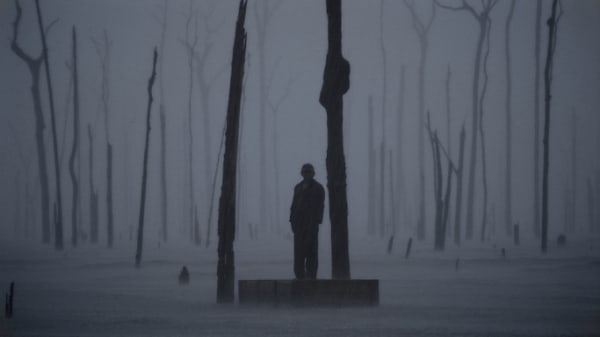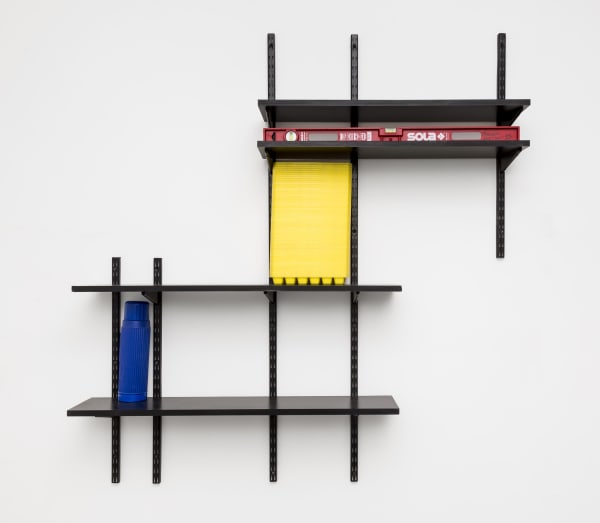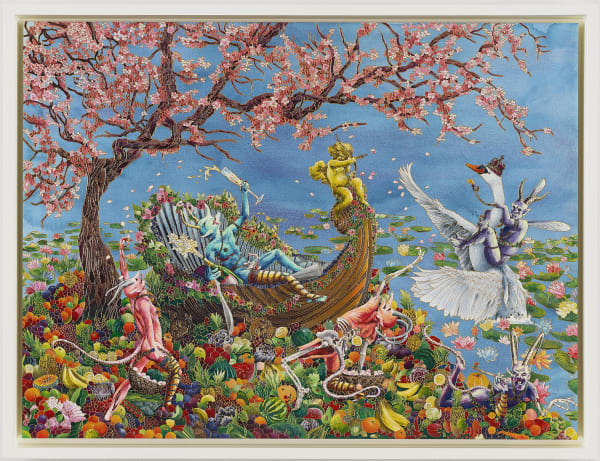Adrián Villar Rojas
Rosario, Argentina, 1980
Adrián Villar Rojas is a nomadic artist: he travels the world to create. His exploratory travels are cardinal in the development of his projects. He can pray with a monk in a village in South Korea or share a musical evening with a former pop star. He will undertake anything for a new project.
When he began his studies, he believed that Argentiniane art was dominated by conceptual themes. In this environment, he did the opposite: he set out to tell stories, to represent figures, to express emotions. His projects are full of anguish and comedy: from shark eggs to corn cobs, from kittens to a fish out of water taking its last breath. Works of art in natural spaces or that transfer nature to urban spaces.
The origin of this evocation and the overlapping of diverse elements is diverse: his training at the School of Fine Arts in Rosario, his hometown, the influence of university professors and artists active in the late 90s and the opening and the boom of public spaces that helped consolidate the field of contemporary art in Rosario. His home also played a fundamental role. In his own words, a family that rejects the homogeneous and the identical to itself, seeks diversity. From this house he thought and developed all of his work.
One of his central works is based on theater as a way of interpreting the world, of organizing it and of organizing the perception of the other. In theater, each performance is a process of disappearance, a daily mourning. With this premise, he developed El Teatro de la Desaparición (The Theater of Disappearance), a project that was born as a site-specific installation with large-scale sculptures that tell stories, make references to and make dialogues with works of art, structures, objects and archaeological remains selected from three particular sites: The Metropolitan Museum of Art (MET), in the United States, the Kunsthaus Bregenz, in Austria, and the Hill of the Nymphs, at the National Observatory of Athens, Greece. This theater functions as a mirror of the facts, a map of human activity, a model of the past and the present.
Villar Rojas refers to his production as "things". This denomination distances him from the notion of the genius artist, individual and isolated from worldly life, and links him to symbolic productions without any hierarchy, similar to the anonymous work of a worker who makes a cell phone in China or a craftsman at some fair in Rosario. Things, he says, de-fetishizes the sublime and privileged character that the labels of art foist on them. He believes that the word "thing", unlike the word "art", unsettles and triggers a strange reaction, that which seems familiar and ordinary. Thus, he considers that his work resembles the perspective of an alien who discovers planet Earth for the first time, without prejudices or moral evaluations.
-

FUTUROLOGY
By Lara Marmor December 19, 2022Sixty-five million years ago, the last dinosaur became extinct. The fall of a huge meteorite plagued the sky with millimetric particles. Although some theories speculate...Read more -

The past recalled
By Rodrigo Alonso February 4, 2022As we know, contemporary art does not follow specific construction rules, nor does it ascribe to precise disciplines or materialities. As a phenomenon that embodies...Read more -

Spaces of Delirium in the Balanz Collection
By Victoria Giraudo June 1, 2021One of the first things that caught my attention, when I personally toured the Balanz Collection of contemporary art, was a piece discordant with the...Read more







